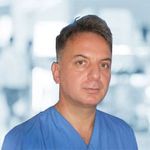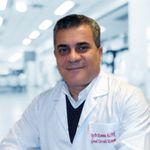




Rhinoplasty Rhinoplasty surgery, which involves reshaping the nose and giving it an aesthetic appearance, is one of the most commonly performed surgeries. In addition, some people turn to the solution of their nasal problem for rhinoplasty. Performing nose surgery by an experienced doctor can certainly guarantee excellent results.
The preoperative and postoperative care as well as the surgical success of the surgeon are the main factors for the result. The exact result is usually seen after one year, but sometimes it can only be seen after a few years. Prolongation of this time depends mainly on personal factors, but is mainly dependent on the thickness of the nasal tip skin and the factors responsible for nasal endprojection.
Rhinoplasty surgery is not just an aesthetic operation.
The nose is a functional organ.
It has functions such as breathing, purifying and humidifying the air. Rhinoplasty surgery is also an operation with functional features. In rhinoplasty, both the bone and the cartilage structure are reshaped, the structures that are too large are reduced, the missing or collapsed structures are widened or enlarged by additional tissue. In the meantime, the structures narrowing the respiratory tract, in particular the septum deviations (curvatures) and septal deficiency or wing sediments, are being corrected.
The nose contains many tissues. In addition to skin and subcutaneous tissue, there are problems such as bone, cartilage, muscle, connective tissue and lining. A red-pink moist texture lining that lines the inner face of the nose is called mucous membrane. The inside of the nasal cavity, the septum and the mucous membrane covering the glands are sometimes different. At the level of the nostrils there are bristles in the section which is about 1 cm wide from the outward opening. The nasal skeleton consists of cartilage tissue in the lower half of the bone.
The nose structure is complex and consists of the skeleton, the supporting structure and the soft tissue cover. The soft tissue covering the underlying roof contains fascia and subcutaneous tissue and skin.
The skin may be thin or thick, light or dark. Those that are darker are usually thicker and have subcutaneous tissue. Thicker skin is more difficult and less adaptable at the bottom. The thickness of the skin varies in different parts of the nose.
The skin and subcutaneous tissue are strongest in the supra type. It is thinner to the nasofrontal region and the thinner skin is present. Skin and subcutaneous tissue are the thinnest points where the nasal bone and lateral cartilage meet.
There are three muscles in the nose related to rhinoplasty.
The most important of them is the depressor Sept.
If the muscle is hyperactive, there may be a significant loss of nasal tip during facial expression. This phenomenon is due to the action of the medial cartilage at the base. This problem can be prevented if the functions of the depressive septic island are limited.
What does world wide international aesthetic offer patients?
How many specialists are there and what accreditation's have been awarded to world wide international aesthetic?
Rhinoplasty, commonly known as the “nose job,” is plastic surgery to change the shape of the nose and to improve its function. This procedure can be performed for medical and cosmetic reasons. Those with breathing problems caused by a birth defect, deviated septum, sinusitis, or an injury to the nose, as well as those who are not happy with the appearance of their nose, can undergo rhinoplasty.
Rhinoplasty has a number of benefits. However, the most compelling reason for patients to have this surgery is to improve the appearance of their noses, which can boost their self-esteem significantly. Besides altering the form and size of your nose, the procedure can also strengthen the bridge, narrow the nostrils, and reshape the tip.
While anyone can undergo rhinoplasty, teenagers are advised to wait until their nose has reached its adult size.
You generally need to wait at least 2 to 3 weeks until you can resume most of your normal activities. However, you should not perform any strenuous activities, such as intense exercise, for about 3 to 6 weeks. During the first few days after the surgery, you will experience some swelling around your eyes, but these will subside within 3 to 14 days. You will also have to wear a nasal splint for about a week following the surgery.
Rhinoplasty is considered one of the most complicated facial cosmetic surgeries. However, thanks to the advances in technology and surgeons’ extensive experience, the procedure has a very high success rate of between 85% and 90%.
Although rhinoplasty is generally safe, it does carry some potential risks of complications and side effects, including bleeding, infection, allergic reaction to the anesthesia, permanent numbness in your nose, difficulty breathing through the nose, an uneven-looking nose, discoloration, persisting pain, scarring, septal perforation, and a need for additional surgery.













Rhinoplasty Rhinoplasty surgery, which involves reshaping the nose and giving it an aesthetic appearance, is one of the most commonly performed surgeries. In addition, some people turn to the solution of their nasal problem for rhinoplasty. Performing nose surgery by an experienced doctor can certainly guarantee excellent results.
The preoperative and postoperative care as well as the surgical success of the surgeon are the main factors for the result. The exact result is usually seen after one year, but sometimes it can only be seen after a few years. Prolongation of this time depends mainly on personal factors, but is mainly dependent on the thickness of the nasal tip skin and the factors responsible for nasal endprojection.
Rhinoplasty surgery is not just an aesthetic operation.
The nose is a functional organ.
It has functions such as breathing, purifying and humidifying the air. Rhinoplasty surgery is also an operation with functional features. In rhinoplasty, both the bone and the cartilage structure are reshaped, the structures that are too large are reduced, the missing or collapsed structures are widened or enlarged by additional tissue. In the meantime, the structures narrowing the respiratory tract, in particular the septum deviations (curvatures) and septal deficiency or wing sediments, are being corrected.
The nose contains many tissues. In addition to skin and subcutaneous tissue, there are problems such as bone, cartilage, muscle, connective tissue and lining. A red-pink moist texture lining that lines the inner face of the nose is called mucous membrane. The inside of the nasal cavity, the septum and the mucous membrane covering the glands are sometimes different. At the level of the nostrils there are bristles in the section which is about 1 cm wide from the outward opening. The nasal skeleton consists of cartilage tissue in the lower half of the bone.
The nose structure is complex and consists of the skeleton, the supporting structure and the soft tissue cover. The soft tissue covering the underlying roof contains fascia and subcutaneous tissue and skin.
The skin may be thin or thick, light or dark. Those that are darker are usually thicker and have subcutaneous tissue. Thicker skin is more difficult and less adaptable at the bottom. The thickness of the skin varies in different parts of the nose.
The skin and subcutaneous tissue are strongest in the supra type. It is thinner to the nasofrontal region and the thinner skin is present. Skin and subcutaneous tissue are the thinnest points where the nasal bone and lateral cartilage meet.
There are three muscles in the nose related to rhinoplasty.
The most important of them is the depressor Sept.
If the muscle is hyperactive, there may be a significant loss of nasal tip during facial expression. This phenomenon is due to the action of the medial cartilage at the base. This problem can be prevented if the functions of the depressive septic island are limited.
What does world wide international aesthetic offer patients?
How many specialists are there and what accreditation's have been awarded to world wide international aesthetic?








Rhinoplasty Rhinoplasty surgery, which involves reshaping the nose and giving it an aesthetic appearance, is one of the most commonly performed surgeries. In addition, some people turn to the solution of their nasal problem for rhinoplasty. Performing nose surgery by an experienced doctor can certainly guarantee excellent results.
The preoperative and postoperative care as well as the surgical success of the surgeon are the main factors for the result. The exact result is usually seen after one year, but sometimes it can only be seen after a few years. Prolongation of this time depends mainly on personal factors, but is mainly dependent on the thickness of the nasal tip skin and the factors responsible for nasal endprojection.
Rhinoplasty surgery is not just an aesthetic operation.
The nose is a functional organ.
It has functions such as breathing, purifying and humidifying the air. Rhinoplasty surgery is also an operation with functional features. In rhinoplasty, both the bone and the cartilage structure are reshaped, the structures that are too large are reduced, the missing or collapsed structures are widened or enlarged by additional tissue. In the meantime, the structures narrowing the respiratory tract, in particular the septum deviations (curvatures) and septal deficiency or wing sediments, are being corrected.
The nose contains many tissues. In addition to skin and subcutaneous tissue, there are problems such as bone, cartilage, muscle, connective tissue and lining. A red-pink moist texture lining that lines the inner face of the nose is called mucous membrane. The inside of the nasal cavity, the septum and the mucous membrane covering the glands are sometimes different. At the level of the nostrils there are bristles in the section which is about 1 cm wide from the outward opening. The nasal skeleton consists of cartilage tissue in the lower half of the bone.
The nose structure is complex and consists of the skeleton, the supporting structure and the soft tissue cover. The soft tissue covering the underlying roof contains fascia and subcutaneous tissue and skin.
The skin may be thin or thick, light or dark. Those that are darker are usually thicker and have subcutaneous tissue. Thicker skin is more difficult and less adaptable at the bottom. The thickness of the skin varies in different parts of the nose.
The skin and subcutaneous tissue are strongest in the supra type. It is thinner to the nasofrontal region and the thinner skin is present. Skin and subcutaneous tissue are the thinnest points where the nasal bone and lateral cartilage meet.
There are three muscles in the nose related to rhinoplasty.
The most important of them is the depressor Sept.
If the muscle is hyperactive, there may be a significant loss of nasal tip during facial expression. This phenomenon is due to the action of the medial cartilage at the base. This problem can be prevented if the functions of the depressive septic island are limited.
What does world wide international aesthetic offer patients?
How many specialists are there and what accreditation's have been awarded to world wide international aesthetic?
CONTACT SUCCESSFUL